Q: Prescription Drug Reporting, required as part of the Consolidated Appropriations Act for the calendar year 2022, is due June 1, 2023. Are the reporting requirements differ from what was reported for 2020 and 2021? If so, what are the new required fields, and who is responsible for providing the information?
A: Prescription Drug Reporting requires health plans to report information on prescription drugs as well as certain elements of health care spending. The 2020 and 2021 calendar year reporting was due in December of 2022 and had a number of optional fields. For the upcoming 2022 filing due on June 1, 2023, these fields will now be mandatory, which will require additional information to be provided from employers for fully-insured and self-insured medical plans. Employers who had an Individual Coverage Health Reimbursement Account(ICHRA) will not need to report any information for the period in which they had an ICHRA.
The claims cost for prescription drugs and health care spending will be provided by the insurance company or third-party administrators. Employer groups will need to provide the insurer and Third-Party Administrators (TPA), who are doing the filing for employer-sponsored plans, with employer data fields. The 2022 instructions are not yet released, but the 2020-2021 instructions referenced that optional fields will now be required. Groups may need to provide the Carrier/TPA with some or part of the following data:
Total Member Months – This calculation will be used for calculating the Average Monthly Premium Paid by Employees and Average Monthly Premium Paid by Employers described below. Employers will need to count the number of employees, spouses, and dependents covered each month, including COBRA participants. The sum of all months of coverage is the Total Member Months. The definition and calculation can be found on page 20 of the 2020-2021 Prescription Data Collection Report.
Earned Premium – This calculation is for fully insured groups only. The Earned premium means all money paid by a member, policyholder, subscriber, and/or plan sponsor as a condition of the member receiving coverage. Do not reduce the amount of earned premium for any federal or state Medical Loss Ratio Rebates. This is the total premiums paid to the carrier for Calendar Year 2022 and can be found by summing each month’s invoice. The definition and calculation can be found on page 20 of the 2020-2021 Prescription Data Collection Report.
Premium Equivalents – This calculation is required for self-funded coverage only. For self-funded plans and other arrangements that do not rely exclusively or primarily on premiums, report the premium equivalent amounts representing the total cost of providing and maintaining coverage, including claims costs, administrative costs, Administrative Services Only (ASO), and other TPA fees, and stop-loss premiums. (The same costs that are taken into account for purposes of calculating COBRA premiums minus the 2% administration charge, if applicable). You would then sum each month of the total rate equivalent/budget rate. The definition and calculation can be found on page 21 of the 2020-2021 Prescription Data Collection Report.
Average Monthly Premiums Paid By Members – Groups will calculate this by taking the total premiums paid by the members for the year divided by the total member months. Groups can calculate the amount for each plan and then take the weighted average across plans in the aggregation level, using member months as the weight, or calculate the amount using total level data from all the plans in the aggregation level. Groups could also aggregate the total medical premiums withheld for 2022 from your payroll records and include any applicable COBRA premiums paid. The total withheld and COBRA premiums would then be divided by the number of months of health coverage. The Carrier/TPA may only request total premiums paid by members, and they will then calculate the average monthly premium calculation. (Note for non-calendar year plans this will include calculations for the plan years occurring during the 2022 calendar year.)The definition and calculation for this number can be found on page 21 of the 2020-2021 Prescription Data Collection Report.
Average Monthly Premium Paid by Employers – this calculation is done by taking the Total Premium Paid by Employers/Total Member Months. Groups once again have the option to determine this in the aggregate or use a weighted average for each month. The calculation and source for the data will depend on your funding method and accounting system:
- Fully-insured – The simplest way for a full-insured group is to take the premium in the aggregate and divide this by the total member months for the year. Fully-insured groups can calculate this by totaling the monthly payments from the invoices paid by the insurance company and then subtracting the annual premiums paid by the employee from payroll and COBRA. The net number would then be divided by the number of months of coverage. The Carrier may only request total premiums paid by employers since the Carrier may calculate the average monthly premium calculation. The definition and calculation can be found on page 22 of the 2020-2021 Prescription Data Collection Report.
- Self-Insured -groups can calculate the rate equivalent for each month by calculating the premium equivalent/budget rate for each tier x the number of employees in each tier and summing all tiers together for each month; then subtract the total annual employee contributions from the total annual calculated premium. Groups would then divide this number by the total member months. The TPA may only request the total premium paid and complete the calculation based on your enrollment history. The definition and calculation can be found on page 22 of the 2020-2021 Prescription Data Collection Report.
- Stop Loss Premiums Paid – this calculation is required for self-funded coverage only. This is the stop-loss premium paid to the insurer. Employers can find this number in the monthly invoices if they are paying the stop loss carrier directly. Groups may also find this number on the monthly TPA invoice. The definition and calculation can be found on page 21 of the 2020-2021 Prescription Data Collection Report.
The Center for Medicare & Medicaid Services has not released the 2022 reporting templates or instructions at this time. Employer groups can access the CMS Prescription Drug resource page by clicking here.







